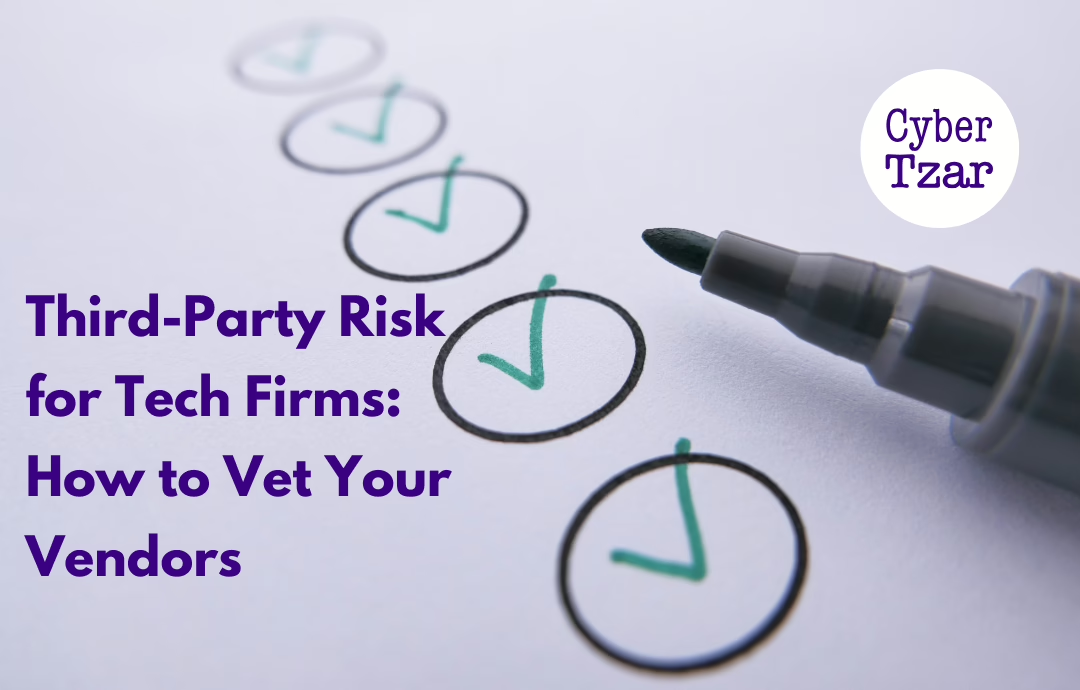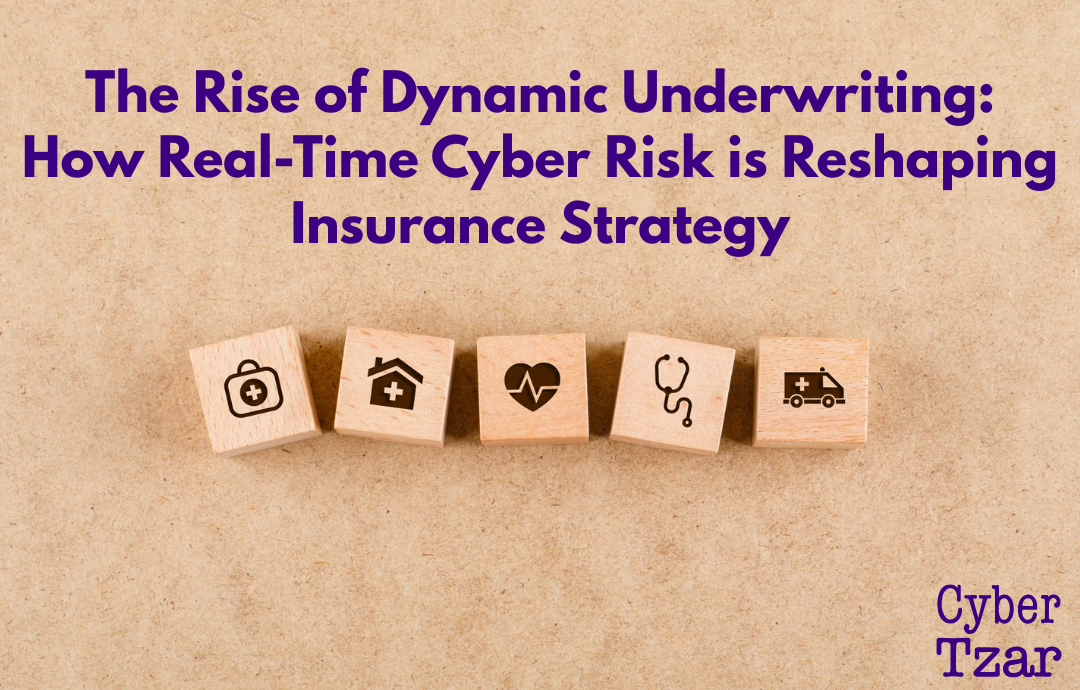Introduction
Tech firms thrive on collaboration and integration, relying on third-party vendors for cloud services, software libraries, payment processing, and IT support. However, every external provider introduces cybersecurity risk, and attackers often target vendors as a way to compromise multiple businesses at once.
A single weak link in your supply chain can lead to data breaches, regulatory fines, and reputational damage. Yet, many tech firms lack a structured approach to vetting and monitoring their vendors.
This article explores the risks associated with third-party vendors, key assessment criteria for tech firms, and best practices for managing supplier security.
1️⃣ Why Third-Party Risk is a Major Issue for Tech Firms
📌 62% of cyber breaches originate from third-party vulnerabilities.
📌 Open-source libraries and cloud services are common entry points for attackers.
📌 Regulators are increasing scrutiny on supply chain security—tech firms must prove they assess and monitor their vendors.
💡 A strong third-party risk management strategy is no longer optional—it’s essential for securing your business.
2️⃣ The Biggest Third-Party Risks Facing Tech Firms
🔹 1. Unsecured Cloud Services & SaaS Applications
Many tech firms rely on third-party SaaS platforms, cloud storage, and collaboration tools. However, these services often have misconfigured security settings or lack strong access controls.
Common Risks:
- Poorly secured APIs exposing customer data.
- Cloud misconfigurations leaving sensitive information publicly accessible.
- Weak access controls, allowing unauthorised users to gain entry.
🛡️ How to Reduce Risk:
✔ Verify that cloud vendors follow strong security standards (e.g., ISO 27001, SOC 2).
✔ Enable Multi-Factor Authentication (MFA) for all cloud services.
✔ Review API security and restrict unnecessary integrations.
🔹 2. Open-Source Software & Third-Party Code Dependencies
Many tech firms rely on open-source libraries to build products faster—but attackers exploit vulnerabilities in widely used codebases.
Common Risks:
- Unpatched vulnerabilities in open-source dependencies (e.g., Log4j, OpenSSL).
- Malicious code injected into software supply chains.
- Lack of visibility into security risks within external libraries.
🛡️ How to Reduce Risk:
✔ Use Software Composition Analysis (SCA) tools to track open-source dependencies.
✔ Regularly update third-party libraries to patch known vulnerabilities.
✔ Vet open-source software for security risks before integrating it.
🔹 3. Vendor Data Breaches & Weak Security Practices
Your vendors handle sensitive data, but not all of them follow strong security practices. If a vendor is breached, your company’s data could be exposed.
Common Risks:
- Third-party breaches exposing customer or employee information.
- Vendors storing unencrypted data, making it easy for attackers to steal.
- Lack of incident response planning, leading to slow breach detection.
🛡️ How to Reduce Risk:
✔ Ensure vendors encrypt data at rest and in transit.
✔ Require vendors to have an incident response plan and test it annually.
✔ Set up contractual obligations for vendors to notify you of breaches immediately.
3️⃣ How to Vet Your Vendors: A Step-by-Step Guide
Tech firms should have a structured process for assessing, onboarding, and monitoring third-party vendors.
✅ 1. Pre-Onboarding Vendor Assessment
Before signing a contract, tech firms should evaluate a vendor’s security posture.
Key Questions to Ask:
✔ Does the vendor hold security certifications (ISO 27001, SOC 2, Cyber Essentials)?
✔ What data security and encryption measures do they have in place?
✔ How do they handle vulnerability management and software patching?
✔ What is their incident response plan if a breach occurs?
✔ Have they suffered a cyber incident in the last 12 months?
💡 Ensure security is part of the vendor selection process—not an afterthought.
✅ 2. Define Security Expectations in Vendor Contracts
Once you choose a vendor, formalise security expectations in contracts and agreements.
📌 Key Contractual Clauses:
✔ Data protection responsibilities (who owns and secures what data).
✔ Notification requirements for security incidents and breaches.
✔ Access control policies (who can access your systems and data).
✔ Right to audit clause, allowing you to assess security compliance.
💡 If a vendor won’t commit to security requirements in writing, that’s a red flag.
✅ 3. Continuous Monitoring of Vendor Security
Vendor risk doesn’t end at onboarding—tech firms must continuously monitor supplier security.
📌 How to Continuously Monitor Vendors:
✔ Automated risk scanning – Use tools that track vendor security risks in real time.
✔ Quarterly security reviews – Ensure vendors update security controls regularly.
✔ Incident reporting – Require vendors to disclose breaches within 24-48 hours.
✔ Penetration testing – Test vendor integrations for weaknesses annually.
💡 A vendor that was secure last year may not be secure today—continuous monitoring is key.
✅ 4. Have a Vendor Offboarding Plan
If a vendor is no longer needed or fails to meet security expectations, tech firms must offboard them securely.
📌 How to Offboard Vendors Securely:
✔ Revoke system and data access immediately.
✔ Ensure all company data is deleted from vendor systems.
✔ Audit logs to confirm no unauthorised access occurred before offboarding.
💡 Neglecting vendor offboarding leaves security gaps that attackers can exploit.
4️⃣ The Business Benefits of Strong Vendor Risk Management
✅ Stronger Cybersecurity – Protect your company from third-party breaches.
✅ Regulatory Compliance – Avoid GDPR fines and supply chain security audits.
✅ Stronger Investor & Customer Confidence – Demonstrating strong vendor security makes your company a more attractive investment.
✅ Reduced Business Disruptions – Minimise downtime caused by vendor security incidents.
💡 Tech firms that take third-party security seriously will be more resilient, competitive, and trusted in the market.
Final Thoughts: Vendor Security is a Business Priority
Tech firms must stop assuming vendors are secure and start actively vetting, monitoring, and managing third-party risks. The rise in supply chain attacks means that businesses are only as secure as their weakest external provider.
🔹 Key Takeaways for Tech Firms:
✔ Cloud services, SaaS apps, and open-source code all introduce third-party risk.
✔ Businesses must assess vendor security before signing contracts.
✔ Continuous monitoring is essential—vendor security changes over time.
✔ Security expectations must be formalised in vendor agreements.
✔ A weak vendor can compromise your business—don’t take shortcuts on security.
By adopting a structured third-party risk management approach, tech firms can mitigate cyber risks, ensure regulatory compliance, and protect their customers and reputation.
📢 What’s Next?
💡 Next in the series: “Building a Cyber-Resilient Supply Chain: Best Practices” (w/c 4 June).
Would you like a third-party security checklist or risk assessment framework? Get in touch today. 🚀


